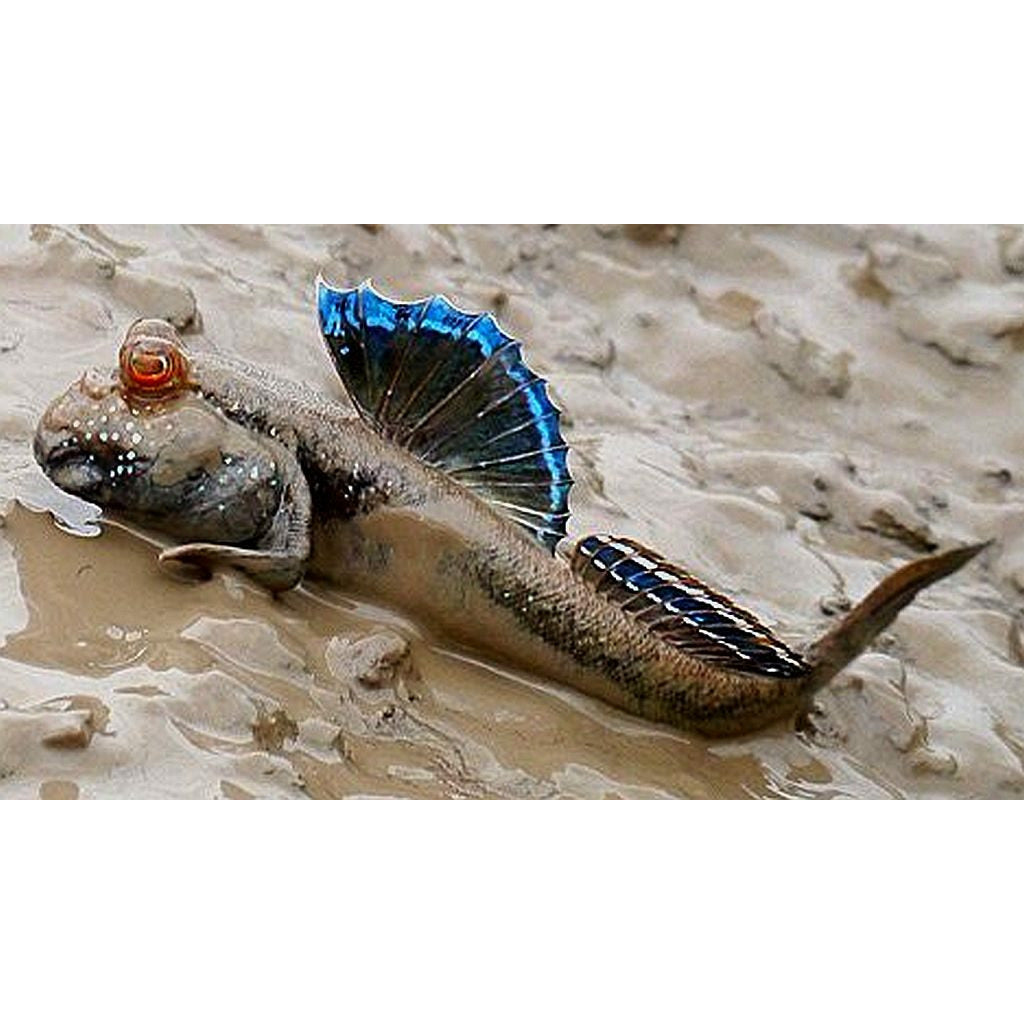- Product
- Mudskipper
Mudskipper
Couldn't load pickup availability
Mudskippers rank amongst the most fascinating of intertidal life of mangrove and mudflat habitats. The Blue-spotted Mudskipper Boleophthalmus boddarti is amongst the most conspicuous of its kind and, if present, is easily seen at low tide when active on exposed mudflats. At high tide they remain in their burrows, hidden from sight.The species reaches around 20 cm in total length, and is boldly patterned with diagonal rows of blue spots along the flanks and scattered spots on the cheeks. Dark bands are generally present on the flanks too. The eyes are large and bulging.
The Blue-spotted Mudskipper is highly territorial, and skirmishes between neighbouring males are frequent. During such confrontations both dorsal fins are raised as a threat. At this time the soft fin spines running through the anterior dorsal fin are easily seen. Males also raise their dorsal fins and leap into the air to attract a female, who is then escorted to the burrow for mating.
Observations suggest these mudskippers feed both on plant material as well as small invertebrates
Periopthalmus novemradiatus tends to occur in open habitats in mangrove systems, such as seaward mudflats, and sparsely covered parts of the back-mangrove.
Similar in appearance to the closely-related Blue-spotted Mudskipper, this species is most easily identified in the field by the fine blue spots on the front dorsal fin, and by the arrangement of hyphen-like blue spots on the second dorsal fin, which are neatly arranged in vertical and horizontal lines. Dark bands are often visible on the flanks, and in some populations the skin below the eye is pale blue.
This species is farmed and consumed in parts of the Far East (China, Japan). In 2009 the species was confirmed in parts of Peninsular Malaysia and Indonesia. The image at left was taken on the north coast of Borneo, and the other images on the east coast of Peninsular Malaysia.
CARE GUIDELINES:
- Diet: Mostly carnivorous. Not picky, but requires a varied diet of dry, frozen, and live foods for optimal health and coloration.




